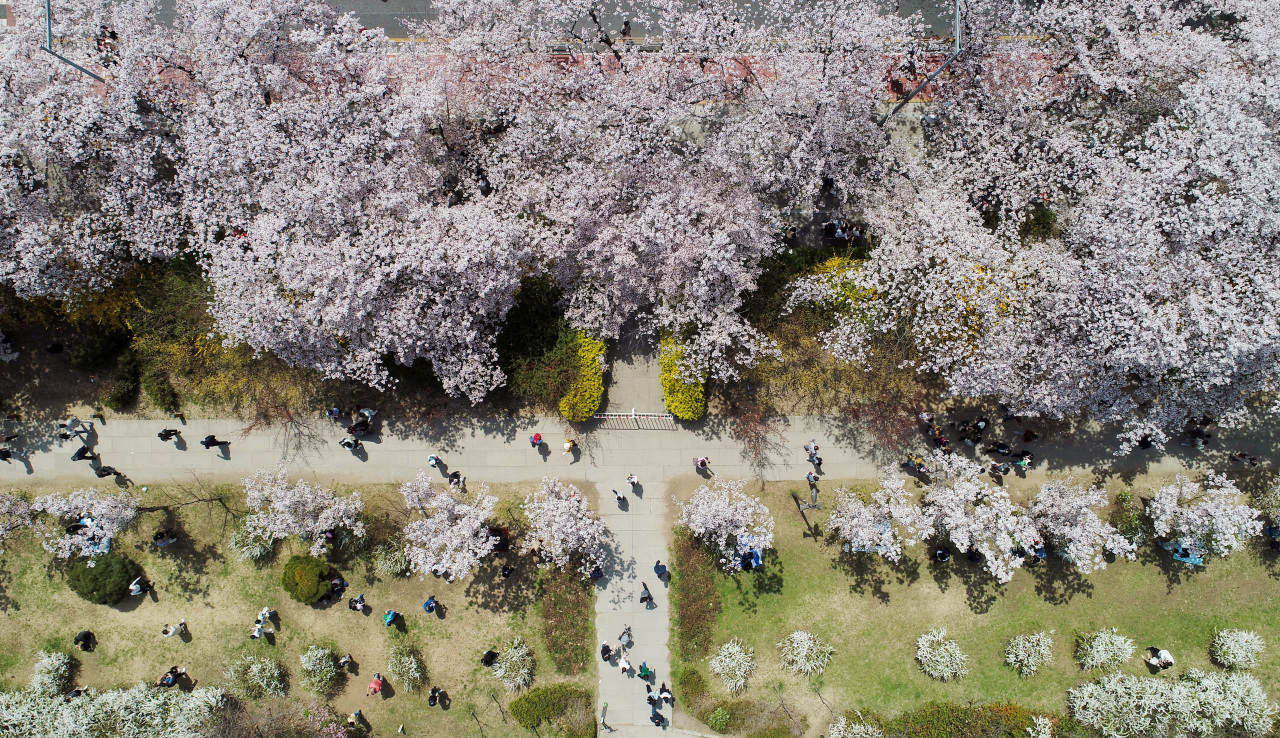 |
Seoulites picnick on Sunday at a reverside park in Yeouido, central Seoul, where cherry blossom trees are in full bloom. South Korean health officials say the remaining social distancing restrictions may end April 18 as omicron wave recedes. (Yonhap) |
The first case of an omicron recombinant variant, XL, was discovered in South Korea, the Korea Disease Control and Prevention Agency announced Tuesday.
The XL patient, who tested positive on March 23, was boosted with a third dose, had no recent travel history and showed a mild disease course, said Lee Sang-won, the head of the KDCA’s epidemiological analysis team, during a briefing Tuesday.
XL is one of about 17 different combinations of omicron’s two sublineages BA.1 and BA.2 that are dominating the outbreaks across the globe.
Korea’s first cases of BA.2 were found in the last week of January, just as the original omicron BA.1’s share of new cases crossed 50 percent and became the dominant virus. BA.2 cases rose steadily to replace BA.1 by the third week of March.
The KDCA says the incidence of recombinant omicron variants is low in Korea despite “substantial monitoring efforts.” But it is unclear how much whole genomic sequencing is actually occurring nationwide.
The KDCA has been unable to provide a specific figure on how many cases have been whole-genome sequenced since omicron’s dominance here.
In a written response the KDCA told The Korea Herald, “As the number of confirmed cases has increased, there is no set percentage of confirmed cases that are subject to whole-genome sequencing. Rather, analysis is being carried out from time to time within the scope of our capacity.”
The impact of the set of omicron’s many recombinant variants is “likely limited,” according to Lee.
“There was a period when both BA.1 and BA.2 were circulating in Korea, but they overlapped for only a brief while, relatively speaking,” he said. “Their transmissibility has increased compared to BA.2, but based on data so far, there’s no evidence the recombinant variants are associated with more severe disease.”
The KDCA also announced that in an analysis of 9,243,907 cases that were confirmed since the beginning of the pandemic up to March 19, 0.284 percent or 26,239 cases were “suspected reinfection.”
Suspected reinfection is defined as a positive test after 90 days have elapsed since the primary infection regardless of symptoms. A positive test following symptoms or exposure at least 45 days from the first infection is also considered a suspected reinfection.
About 95 percent of Korea’s 15,635,274 known cases and 66 percent of its 19,850 deaths have been recorded since omicron was declared the dominant version of COVID-19 here on Jan. 26.
By Kim Arin (
arin@heraldcorp.com)








